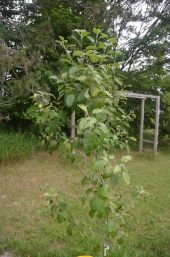




Home & LifeStyle Building Training. How to transition from the Rat Race to Freedom!
https://upvir.al/56817/lp56817
Also, Chechout My YouTube Channel
https://www.youtube.com/channel/UC-rd5G_2jWSV-sAi-xpdFZA




 We have fire ants on our place but not many of them. Mostly we try to encourage native ants and other critters that might compete with the fire ants. I'm glad you're determined to not use poison, I think use of poison has only made the fire ant problem worse by killing competitors.
We have fire ants on our place but not many of them. Mostly we try to encourage native ants and other critters that might compete with the fire ants. I'm glad you're determined to not use poison, I think use of poison has only made the fire ant problem worse by killing competitors. Idle dreamer








"Study books and observe nature. When the two don't agree, throw out the books" -William A Albrecht
"You cannot reason a man out of a position he has not reasoned himself into." - Benjamin Franklin




"To oppose something is to maintain it" -- Ursula LeGuin








Home & LifeStyle Building Training. How to transition from the Rat Race to Freedom!
https://upvir.al/56817/lp56817
Also, Chechout My YouTube Channel
https://www.youtube.com/channel/UC-rd5G_2jWSV-sAi-xpdFZA




Seed the Mind, Harvest Ideas.
http://farmwhisperer.com




There are too many new and different mistakes out there waiting to be made to be wasteing your time repeating the same old mistakes.




Home & LifeStyle Building Training. How to transition from the Rat Race to Freedom!
https://upvir.al/56817/lp56817
Also, Chechout My YouTube Channel
https://www.youtube.com/channel/UC-rd5G_2jWSV-sAi-xpdFZA




Idle dreamer
 1
1




Dan alan wrote:Well, thing is that these ant dens are right in my grow beds and paths. So I really need to not destroy the soil life if at all possible.
I planted a tree in a big ant den. The soil is so aerated, lol. Don't know if they will kill the tree though..




Home & LifeStyle Building Training. How to transition from the Rat Race to Freedom!
https://upvir.al/56817/lp56817
Also, Chechout My YouTube Channel
https://www.youtube.com/channel/UC-rd5G_2jWSV-sAi-xpdFZA




Intermountain (Cascades and Coast range) oak savannah, 550 - 600 ft elevation. USDA zone 7a. Arid summers, soggy winters
 1
1








Dan alan wrote:Any idea how deep fire ants dens go? Perhaps I could dig out the den into a wheelbarrow and deposit them elsewhere until they leave that soil?








Tyler Ludens wrote:In my experience fire ants tend to like sunny open soil, so anything you can do to get plants up and shading the soil might help keep down their numbers. If you have ant nests already in your growing beds, you may have to sacrifice some of your plants in order to kill the nest. Pouring boiling water on a nest can kill it, but you have to do it repeatedly until the nest doesn't come back. Continually disturbing ant nests may cause them to move out of an area, though they may just build a nest somewhere else. Flooding the nest with a hose might help drive them away. Unfortunately this is destructive to your planting bed as well. Foraging chickens will sometimes dig up and eat fire ants, and armadillos will dig out nests, but of course both these kinds of critters will also wipe out your plants. I wish I had more encouraging things to say.
We have fire ants on our place but not many of them. Mostly we try to encourage native ants and other critters that might compete with the fire ants. I'm glad you're determined to not use poison, I think use of poison has only made the fire ant problem worse by killing competitors.
 4
4




Home & LifeStyle Building Training. How to transition from the Rat Race to Freedom!
https://upvir.al/56817/lp56817
Also, Chechout My YouTube Channel
https://www.youtube.com/channel/UC-rd5G_2jWSV-sAi-xpdFZA








Idle dreamer
 1
1
















"The rule of no realm is mine. But all worthy things that are in peril as the world now stands, these are my care. And for my part, I shall not wholly fail in my task if anything that passes through this night can still grow fairer or bear fruit and flower again in days to come. For I too am a steward. Did you not know?" Gandolf




 1
1




Moderator, Treatment Free Beekeepers group on Facebook.
https://www.facebook.com/groups/treatmentfreebeekeepers/
















